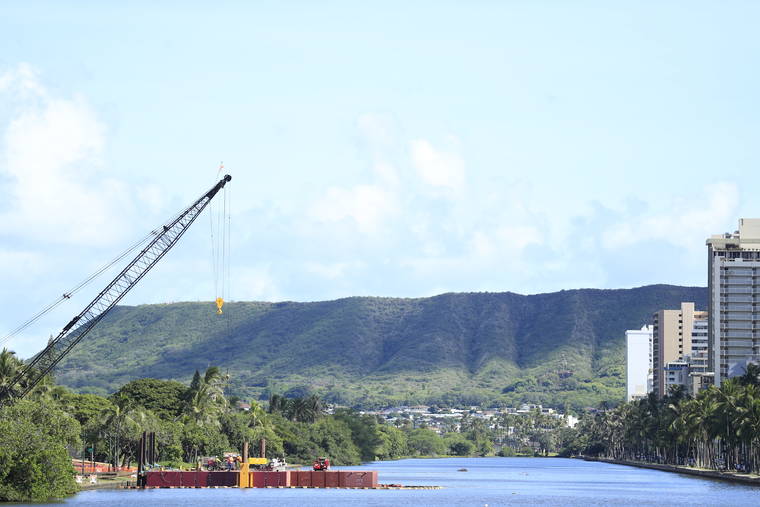Judge halts effort to fund Ala Wai flood control project

JAMM AQUINO / OCT. 15
The federal government has offered to pay $220 million of a $345 million Army Corps of Engineers project designed to protect Waikiki and the upper reaches of the Ala Wai watershed from flooding.
A judge issued an injunction today stopping the city and state from funding a controversial flood control project that would build walls and berms around the Ala Wai Canal and put huge flood-control structures in the upper reaches of the watershed.
The federal government has offered to pay $220 million of a $345 million Army Corps of Engineers project designed to protect Waikiki and the upper reaches of the Ala Wai watershed from flooding. Supporters have argued that current modeling indicates that a 100-year event would result in damage to more than 6,000 structures with approximately $1.14 billion in structural damage and damage to critical infrastructure.”
The city and state signed a memorandum of agreement, effective Sept. 19, committing the state to pay the project’s $125 million cost share by Nov. 30 and the city to maintain the project. The state had planned to raise the money by selling certificate of participation (COP) bonds, which don’t require legislative approval like general obligation bonds.
In his ruling, Judge Jeffrey Crabtree, senior Environmental Court judge for the 1st Circuit, enjoined the proposed COP funding absent an accepted environmental impact statement. His order also prohibited placing the COP funds in an escrow account.
“The envisioned 100-year flood could be devastating. On the other hand, the impact on our streams, on irreplaceable historical features and on traditional cultural practices could also be devastating if the project is implemented in violation of the law,” Crabtree wrote. “The further along the project is before an EIS is accepted, the more likely this harm is to occur. It cannot be fixed with money. In balancing these public interests, absent an accepted EIS, the court finds the scales tip towards injunctive relief.”



